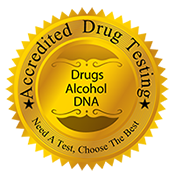
10 Panel Drug Test, Akron, AL
Accredited Drug Testing provides a 10-panel drug test at testing centers located in Akron AL and throughout the local area. Same day service is available, and most testing centers are within minutes of your home or office. DOT drug testing and ETG Alcohol testing is also available.
509 WILSON AVE 8.8 miles
EUTAW, AL 35462
1001 MIMOSA PARK RD 22.1 miles
TUSCALOOSA, AL 35405
819 MIMOSA PARK RD 22.2 miles
TUSCALOOSA, AL 35405
5005 OSCAR BAXTER DR 22.8 miles
TUSCALOOSA, AL 35405
1771 SKYLAND BLVD E 24.1 miles
TUSCALOOSA, AL 35405
Urine drug testing is the most common and customizable screening method available in the drug testing world. Many times, drug tests are ordered from companies, courts, or individuals without knowing what drug panel is needing to be analyzed.
The most common drug panel options include the 5,10, 12, 14 and 17 panel drug tests but we also offer specialized and customized panels based on your specific need and we are here to discuss exactly what is tested in each type of drug test panel.
Urine or Hair Drug Testing in Akron, AL - You Choose!
The detection period for a urine drug test is 1-5 days. However, hair drug testing is becoming more common because the detection period for a standard hair test can be up to 90 days. You must have at least an inch and a half of hair (1.5 inches) on your head or body hair may be used when conducting a hair drug test.
Facts About 10 Panel Drug Test
- The most cost-effective option in the workplace
- Most common and customizable screening method
- Detects recent drug use
- Available in instant or lab based testing options
Remember that many opioid addictions lead to further drug use, including heroin, so you may find that a standard 5 and 10 panel is not fulfilling your needs. In this case, consider a 12-panel drug test, which tests for additional opiates and painkillers that would not show up on a test with fewer panels.
A urine drug test detects recent drug use and is currently the only testing method that is approved for federally mandated drug testing.(5 panel DOT drug Test) Urine testing is appropriate for all testing reasons, from pre-employment to random to post-accident - and can be performed for a wide range of illicit and prescription drugs.
What drug are tested for in a 10 Panel Drug Test?
The drugs tested in a10 panel urine drug test include:
- Amphetamines
- Barbiturates
- Benzodiazepines
- Cocaine
- Marijuana
- MDA
- Methadone
- Methaqualone
- Opiates
- PCP
- Propoxyphene
The standard 10 panel drug test is typically collected at a collection site and analyzed at a SAMHSA Certified Laboratory. If you need a rapid results test, the 10 panel is available for a rapid result in most areas Nationwide. Results for a rapid results test are typically available the same business day (for negative results) and if a non-negative result exist, we send the specimen to the lab to perform confirmation testing at no additional charge.
What is a drug test?
A drug test is a technical analysis of a biological specimen such as urine, hair, blood, breath, finger nail and oral fluid/saliva. The common procedure for a drug test is to have a donor provide a specimen to a drug testing collection specialist, complete a chain of custody form and then the collector will send by carrier the specimen to a laboratory for analysis and a determination if the specimen is negative or positive. Although there many laboratories in the United States which provide drug testing analysis, it is recommended that only a laboratory that is SAMHSA Certified is to be used when determining a drug testing result.
Does passive smoke inhalation cause a false positive for marijuana?
"Passive" smoke inhalation from being in a room with people smoking marijuana is not considered valid, as the cut-off concentrations for lab analysis are set well above that which might occur for passive inhalation.
Other abnormalities in the urine screen may indicate that results may be a false negative or that there was deliberate adulteration of the sample. For example:
- a low creatinine lab value can indicate that a urine sample was tampered with; either the subject diluted their urine by consuming excessive water just prior to testing, or water was added to the urine sample.
- creatinine levels are often used in conjunction with specific gravity to determine if samples have been diluted. To help avoid this problem, the testing lab may color the water in their toilet blue to prevent the sample being diluted with water from the toilet.
- subjects may also attempt to add certain enzymes to the urine sample to affect stability, but this often changes the pH, which is also tested.
How long do drugs stay in your system?
The window of detection or often times referred to as look back period of a drug test depend on several factors. Some of the factors impacting how long a drug will stay in your system are:
- The amount of the drug taken
- The frequency of the drug taken
- The type of drug taken
- An individual's body metabolic rate and general health
- The amount of fluids consumed since ingesting the drug
- The amount of exercise since ingesting the drug
- Other genetic variations that would impact an individual's response to a specific drug
In the case of life-threatening symptoms, unconsciousness, or bizarre behavior in an emergency situation, screening for common drugs and toxins may help find the cause, called a toxicology test or tox screen to denote the broader area of possible substances beyond just self-administered drugs. These tests can also be done post-mortem during an autopsy in cases where a death was not expected. The test is usually done within 96 h (4 days) after the desire for the test is realized. Both a urine sample and a blood sample may be tested.
ADT offers 10 panel urine drug tests in Akron, AL.
Don't see your location, call us today at
(800) 221-4291
(800) 221-4291
Akron Drug Testing locations
To schedule a 5, 10, 12, 14 or 17 panel urine or hair drug test at a testing center in Akron AL, please call (800) 221-4291 or schedule online.
Were you looking, instead, for:
Local Akron Information
Local Area Info: Akron, Alabama
Akron is a town in Hale County, Alabama, United States. In 1906, the owner of a large plantation, Waller Evan Wedgworth, sold part of his land to developers, and a construction boom followed. The town was incorporated in March 1918. At the 2010 census the population was 356, down from 521 at the 2000 census. Akron has one site on the National Register of Historic Places, the Greek Revival cottage known as Tanglewood.
Akron is located in northwestern Hale County at 32°52?35?N 87°44?28?W? / ?32.87639°N 87.74111°W? / 32.87639; -87.74111 (32.876425, -87.740978), 3 miles (5 km) southeast of the Black Warrior River and 1 mile (1.6 km) northwest of Alabama State Route 60. Greensboro, the Hale County seat, is 17 miles (27 km) to the southeast. Eutaw is 14 miles (23 km) by road to the southwest, and Moundville is the same distance to the northeast.
As of the 2010 Census Akron had a population of 356. The racial and ethnic composition of the population was 86.5% black or African American, 13.2% white, 0.3% reporting two or more races and 0.3% Hispanic or Latino of any race.


